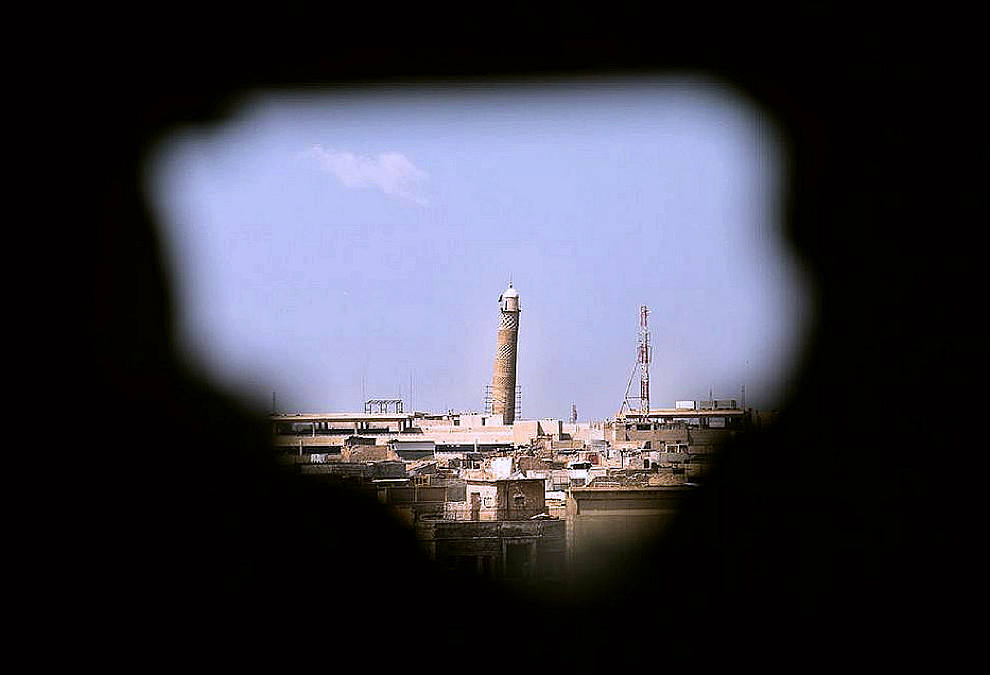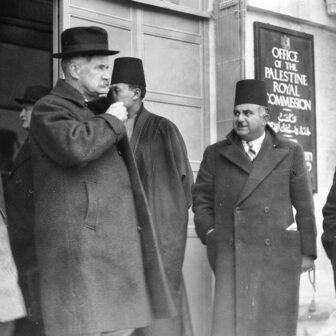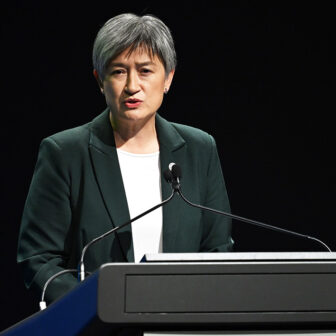Anyone reckless enough to have declared that a turning point has been reached in the Syria conflict should by now be out of the prediction game, given the number of false leads during six savage years of war. At least symbolically, however, something of a milestone was reached this week in the war on history being waged by Islamic State, or ISIS. On 21 June, its forces expertly blew up not only the Great Mosque in Mosul but also its even more celebrated leaning minaret.
It’s worth recalling the circumstances of the mosque’s construction 845 years ago. Nur al-Din was the first Islamic leader to see the need to unite the central Islamic lands under one leadership, a goal he saw as a precondition for any successful campaign to expel the Crusaders from the Middle East. What Nur al-Din lacked, however, was the manpower and materiel needed to conduct a sustained offensive against Jerusalem.
Twenty years after taking control of the territories of Damascus and Aleppo, he still lacked control of the resources of northern Mesopotamia, which were centred on Mosul. His opening came in 1170 with a dispute over the succession to the Zengid dynastic line installed there by his father. Nur al-Din used allegations that the designated successor was subject to excessive Christian influence as an excuse to take direct control.
One of his first acts in Mosul was to build a splendid new Great Mosque. In a brilliant article published in 2002, the Syrian-American expert on Islamic architecture Yasser Tabbaa analysed the building and its Koranic inscriptions and came to two conclusions: that the minaret – with its forty-five-metre cylindrical form piercing the sky – pays tribute to the influence of the Iranian Seljuk style in architecture, and that the building as a whole conveyed the message to Christians that they should stay out of higher politics in the city. Nur al-Din died two years later but Mosul’s entry into the jihad program was sustained under his successor, Saladin, who ushered in a new phase of aggressive Holy War.
Why, then, would ISIS have a problem with the mosque’s message? It’s a mystery. It may well be that no rationale exists for the masterfully planted detonations that ripped the building apart in seconds on Wednesday, and then toppled its minaret, some distance away on the northern side of the courtyard.
Many Iraqi commentators have rightly seen the explosions as a sign of ISIS’s desperation as the struggle for Mosul enters what looks like its last days and the offensive against their Syrian co-capital, Raqqa, is about to open. With Raqqa’s inevitable fall, ISIS will have lost virtually all the major population centres it held in Syria and Iraq. Its hold on the territories in between – mostly sparsely settled semi-arid lands – has also been made precarious by the relentless coalition bombings and the recent campaigns by the Syrian army via the oil and gas fields east of Palmyra in Resafa (south of Raqqa) and east of the Hauran in southern Syria, and through the constriction of ISIS-held terrain along the middle stretch of the Euphrates.
If ISIS were anything more than a bunch of spoiled, thrillseeking delinquents – inspired and lavishly funded by the very protectors Donald Trump claims to have enrolled in his version of the “war on terror” – then sparing Nur al-Din’s great lighthouse of jihad might have been a wise move. No greater signal of the impoverishment of its cause could have been chosen.
The demolition echoes ISIS’s ahistorical selection of the remote north Syrian village of Dabiq as a rallying point on the basis of a couple of obscure Islamic legends that suggest the village would lie at the centre of an “end of days” confrontation with unbelievers and the West. Again, it might have been wiser to have read up on history a little more closely. In reality, Dabiq was the mustering point for an Islamic offensive against seventh-century Constantinople that petered out without success, and was also the scene of the heart attack that felled a Mamluk commander in the heat of battle and gave rise to the Ottoman Turks’ conquest of Syria in 1516. Historical analogies are always tricky, particularly if badly researched.
It would be rash, however, to see ISIS’s role in Syria as definitively over. The organisation has shown a capacity for profligately suicidal missions that can still do great damage and distract from any sustained efforts to bring the conflict to an end. Numerous battlefronts remain in Syria, and the number of outside parties to the conflict is growing rather than declining. Whatever surgical interventions the sponsors of these campaigns might have in mind, virtually no fights in Syria come out as planned. A selected list of the current conflict fronts helps underline their complexity:
• Raqqa is yet to fall, but at least four parties to the conflict – US-backed forces (both Syrian Democratic Forces and the Kurdish YPG), elements of the Turkish army and the Syrian official armed forces – are intent on taking it in a “race for Berlin” scenario. There is little evidence that any exhibit a strategic understanding as to the likely outcomes.
• Kurdish-controlled areas in the north highlight a host of problems in relations with Turkey that American intervention could further empoison.
• Little information has emerged from the black hole of Idlib province, west of Aleppo, the dumping ground for Islamist fighters and supporters evacuated from Damascus, Homs and Aleppo under “reconciliation agreements.” There, the largely al Qaeda–based forces now control the numerous villages along the Turkish border so tightly that even Facebook and Twitter can’t breach the gravitational field created by their restrictions on the internet. It isn’t at all clear whether efforts are focused on standing down the squabbling Islamist factions, sending them over the Turkish border, forcing a tighter siege on the whole province to secure its submission, or some other strategy.
• Confrontations with largely Islamist-based factions still splutter into life around Damascus, in and around Deraa, and east of Homs and Hama, though the Islamists’ attempt to move on Hama seems to have petered out.
• American efforts to revive the Free Syrian Army are proceeding east of the rich agricultural lands of the Hauran in southern Syria. The strategy seems to envisage a race across the steppe north of the Jordan–Iraq border to prevent official Syrian forces from retaking territory still nominally in ISIS’s hands. Though no explanation has been offered, the strategy is presumably intended to give the United States and its preferred surrogates a seat at any peace settlement. But given the lack of any success so far for the main surrogate, the Free Syrian Army, this looks like a risky operation that could backfire, with the rebel elements again defecting, with their weapons, to one of the Islamist factions or vanishing back over the southern borders.
This list leaves out many other instances of outsiders backing local factions. Among others, they include Hezbollah, Russian “advisers” on the ground, Russian Air Force support for Syrian official operations, Iranian support via Hezbollah, possible continued Turkish replenishment of the Idlib enclave, coalition air strikes, and local militias and Palestinian units vaguely operating at the behest of the Syrian Defence Forces. The risk of misunderstandings is great.
While the conflict may not be in its final days, the trend is towards the Syrian government’s holding a greater spread of territory, the restoration of some semblance of normal life in a few areas retaken in 2016, and a growing capacity among Syrian infantry to sustain campaigns (in tandem with militias and foreign contributors) without being surprised by conflicts breaking out to their rear.
Few reports are emerging from areas recently taken back under government control. The little we hear suggests a fitful return of essential services coupled with freely operating militias or gangster elements, all of this under little or no government control (or indeed with some encouragement). The task of reconstruction is enormous; where to start is still impossible to say.
The demise of ISIS would represent a scaling down of at least one element of the conflict that has intensified in many areas since 2015. It would clear the way for a restoration of something resembling normal life to civilian zones subject to the worst brand of Islamic fundamentalism and the regime’s efforts to bomb or shell the opposition into submission.
But the proliferation of non-Syrian parties still threatens to push the conflict into new forms. Unless Russia, Turkey, Iran, the Gulf states and the United States see the need to stop stamping their agendas on Syrian territory, no end seems possible. It’s time that a few of these players read up on Nur al-Din, the Zengids and why it took 120 years from the building of the Great Mosque in Mosul to end the confrontation with the unbelievers. •




